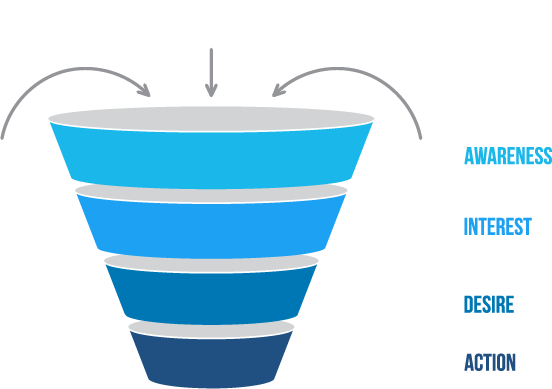Is Last Click Attribution Effective?
Marketing attribution has come a long way since the 1950s, when marketing mix models provided an early prototype for marketing attribution. With the advent of digital marketing in the 1990s, online advertisers found a new way to define marketing success – last click attribution.
What is Last Click Attribution?
Last click attribution measures which touchpoint a customer last clicked on or engaged with before making a purchase, and gives it 100% of the credit for the sale or conversion
This early form of attribution was extremely useful to marketers - For example, if someone orders a pair of shoes, there will be data to tell what advertisement the customer most recently clicked on. This will help marketers better understand how successful or popular a particular ad or product is doing.
What are the Challenges of Last Click Attribution?
While marketers have begun to move away from last click attribution to more accurate and effective multi-touch attribution methods, many organizations are still hesitant to do so. This could prove to be a dire mistake, as last click has a number of significant pitfalls when it comes to accuracy and a rising number of challenges as the customer journey becomes more complex.
1. A Limited Understanding of Customers
While last click attribution is more effective than no attribution model at all, it is a barebones, general way to measure. This is primarily due to how conversion credit only goes to the last platform or medium that the user converted from. Under a last click attribution model, there is a bias towards direct visits, which can make marketers feel uncertain about how their branding and awareness efforts are impacting the campaign as a whole.
By only considering the last asset or webpage that customers interacted with, last click attribution models imply that customers act with no prior thought. However, a general understanding of consumer behavior will clearly indicate that consumers rarely purchase products on a whim with no previous research. Instead, people begin their purchasing journey by identifying that they have a problem. After weeks of thought, and dozens of interactions with a diverse set of potential solutions, customers eventually are driven to make an informed purchasing decision.
Let’s say that a webinar provided the final point in a customer’s journey, driving them to convert. While it’s valuable to know that the webinar converted the customer, it doesn’t explain what drove the prospect to watch the webinar in the first place. Perhaps they had been encouraged to sign up by following your organization’s Twitter. In this case, final touch attribution would give marketers skewed insights that can lead to misguided optimizations. Imagine if this last click attribution information was used to justify decreasing the budget for social media marketing, and divert more funding into webinars. Since a hindered social media effort would decrease interest for the webinars, the campaign as a whole would suffer.
2. Misleading Metrics Lead Marketers Astray
As alluded to in the previous section, the final asset that prospects interact with before converting is not necessarily the primary cause of the conversion. However, final touch attribution leads marketers to believe that those assets are critical to driving conversions. This results in marketers underestimating the impact of their awareness and relationship building initiatives.
For example, imagine if your company’s newly instated blog has increased traffic tenfold in a single quarter. However, according to your organization’s last click attribution model, these blogs are driving no conversions at all. Instead, people are purchasing products by directly visiting the company’s website. This logic is extremely flawed – the blog posts are having a measurable impact on driving reoccurring traffic to the company’s website.
Many assets that drive conversions rely on non-branded campaigns to entice prospects into converting. When consumers aim to fulfill a need, they typically search non-branded queries to find more information on how to resolve it. During this discovery phase, prospects aren’t ready to purchase yet. Over time, they will become more certain of what they want to purchase. If they interact with many of your non-branded assets, this will encourage them to choose your organization’s product. If an organization neglects to invest in these non-branded assets, it is likely a competitor will be noticed instead. These prospects will be led into a competitor’s sales funnel instead of yours – causing your organization to lose leads.
3. Last Touch Marketing Attribution Ignores the Standard Conversion Funnel
Since prospects consult with many resources before making a purchase, conversions are a multistep process. When trying to understand how prospects become customers, many organizations rely on a model referred to as the “conversion funnel.” Below is an illustration of a standard conversion funnel:

As illustrated above, last click accounts only for a very small, bottom-of-the-funnel interaction. It does not account for generating awareness, interest, or desire – which are three prerequisites to consumers performing an action. To drive conversions, organizations should try to account for all stages of the conversion funnel. Unfortunately, last click attribution falls woefully short of this standard.
Why Do Marketers Use Last Touch Marketing Attribution?
With so many flaws apparent in last click attribution efforts, it begs the question - why is this method still utilized at all? Typically, last click attribution is the method of choice for organizations that are subject to rigid organizational structures. As last click became a more dated model, organizations are having difficulty revamping their marketing attribution efforts for three primary reasons:
Organizational Roadblocks
Moving away from last click marketing attribution is a significant undertaking, and many organizations don’t know where to start – or even what their ideal method of marketing attribution looks like.
Existing Processes
Many organizations have crafted incentives for marketing teams to drive more conversions, resulting in greater compensation or a bonus. This is a great idea in theory, except marketing teams will not want to move away from the familiar face of last click attribution – especially not without the explicit alignment of upper-level executives.
Siloed Data
Departments within marketing may not be sharing customer data freely, making it difficult to understand engagements throughout the customer journey. For example, content marketing and social media marketing have completely different goals, and feel no need to share data with each other. To combat this, organizations should create a unified goal across the entire marketing team.
Although better methods exist for marketing attribution, it is certainly understandable why some organizations are stuck in their ways. However, it’s critical that organizations take action to update their attribution strategy. Otherwise, they risk suffering from poorly executed attempts at campaign optimization that can have a negative impact on overall marketing ROI.
Final Thoughts
Fortunately, last click attribution is not the only method of marketing attribution available. As noted, to better understand customers and better reflect the sales funnel, marketing teams should shift to unified marketing measurement. UMM allows marketers to combine aggregate data across attribution models into one holistic measurement. With this comprehensive view into the success of each campaign, teams can leverage UMM to determine which digital mediums and touchpoints played the biggest role in driving conversions for specific users, enabling more accurate campaign insights.
Unified marketing measurement offers a complete view of the customer’s entire journey on a granular level – from first touch to last click – that can be focused on specific business outcomes, such as sales. Best of all, a powerful marketing attribution platform can provide reliable, data-driven insights about how to optimize campaign performance in the future, leading to greater marketing success.





















